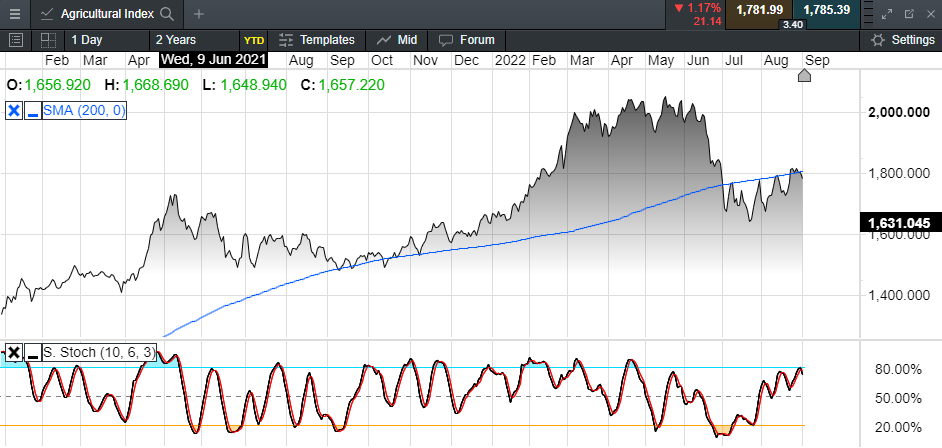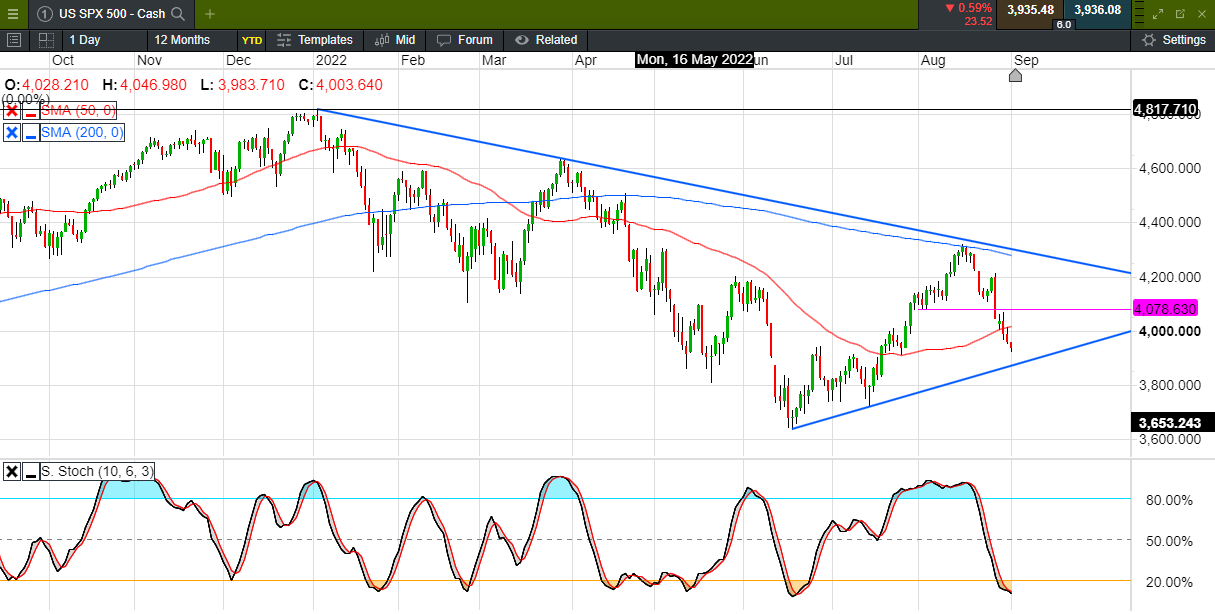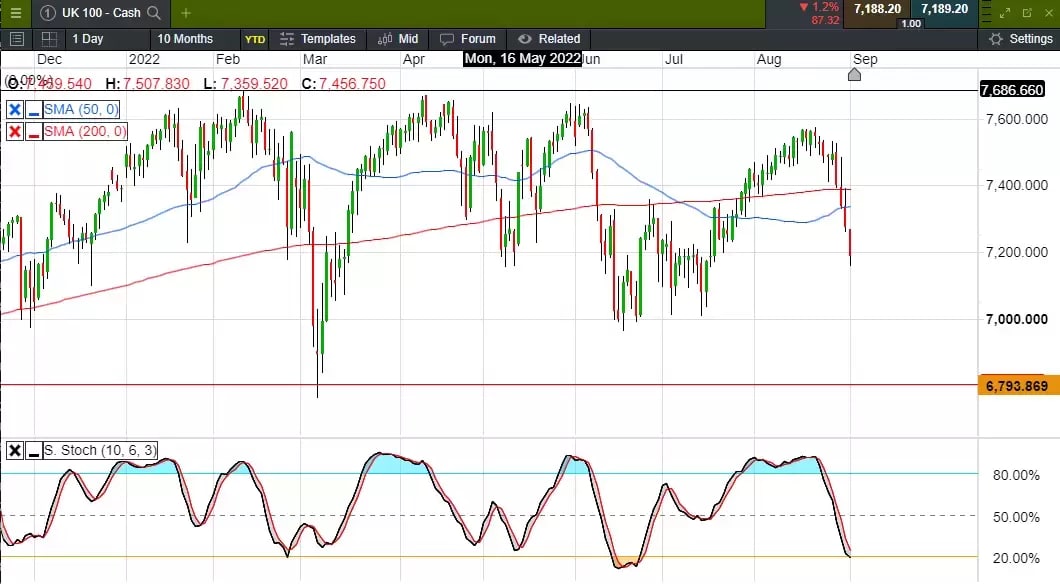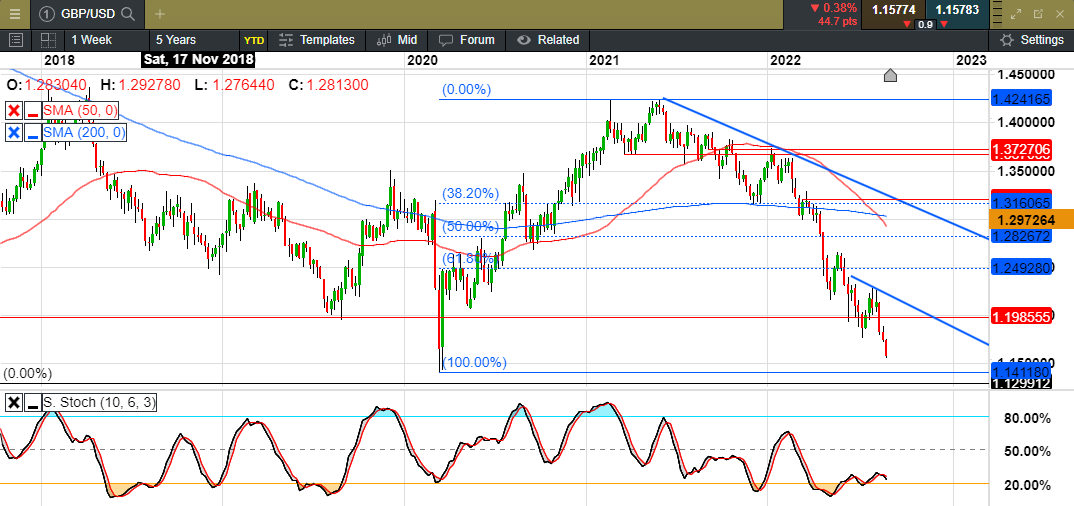The last fifteen years have seen interest rates at record lows, held down by central bankers in response to the financial crisis of 2007 and 2008, while the emergence of the European sovereign debt crisis in 2012 kept them there.
While a lot of the measures that have been taken since 2008 have helped to make the banking sector more resilient in the UK and the US, a lot of the problems that caused the problems in Europe haven’t been resolved, which means the current situation is likely to be a significant head wind, even without the problems of surging energy prices and rising inflation.
With the Chinese economy also struggling due to their zero-covid policy, as well as the problems that are currently engulfing its property sector, any sort of an economic rebound looks further away than ever as winter approaches.
Up until recently there had been a rather naïve expectation that the current pace of interest rate rises that we’ve seen so far this year from the Federal Reserve would start to reverse in 2023.
This mindset only works if you think that current levels of inflation are likely to reverse quite sharply from where they are now, currently at 8.5% on the CPI measure, back to the mandated inflation target of 2%.
Similarly with the Bank of England this seems unlikely when all of the headlines are of an 80% rise in the energy price cap in October, followed by another large rise towards the end of this year, and inflation expected to remain in double digits into 2023.
This presents enormous problems for the UK government, but is by no means unique to it, given that Europe has similar problems in spades that it has to deal with, and the risks of Vladimir Putin shutting down gas supplies through Nord Stream 1.
The reality is financial markets appear to be losing faith in politicians of all political persuasions to deal with the problems facing them, as well as their populations.
Years and years of political short termism and economic mismanagement appear to be coming home to roost, and the bill appears to be becoming due.
There’s also the small matter that agricultural commodity prices are likely to remain high even after the recent falls we’ve seen since the May peaks, which are minimal compared to where prices were at the beginning of 2020.
CMC Agricultural Index – year to date

Source: CMC Markets
The composition of this index is made up of 30% corn and wheat, while soybean and soybean meal makes up 35%.
The recent hot weather is likely to have impacted the ability of farmers to improve on this year’s crop yields, even without the war in Ukraine, and the fertiliser shortages that have resulted due to the Russian invasion of Ukraine.
This would suggest that inflation is likely to stabilise at a much higher level than which we’ve become used to, probably at around 4% which means that higher rates are likely to become the norm over the next few years.
That should be ok as long as wages manage to keep pace, but even if they do unemployment levels are likely to edge higher over the next 12 months.
What this means for markets is that we are likely to see further bouts of volatility as we head into the end of this year, however we are starting to see some evidence that energy prices may have peaked in the short term, but that doesn't mean they won't stay high.
In the last few days UK natural gas prices have fallen back quite sharply which is welcome news, however they still remain eye-wateringly high, and are likely to remain so.
UK Natural Gas prices – Oct 2022

Source: CMC Markets
Crude oil prices have also seen some significant declines in the past few months; however, the lack of new capacity is likely to limit the downside, with the current weakness a result of concerns over a global recession, and some demand destruction in the face of high levels of inflation.
On the positive side the recent falls in prices have brought some respite to prices at the petrol pumps, as prices fall back to levels just prior to the Russian invasion of Ukraine, although they are higher year to date.
Brent Crude Oil - daily chart

As far as equity markets are concerned the picture is a little more mixed, however we are approaching some critical levels with the June lows the key trigger points when it comes to the prospect of further weakness.
DAX – 11-month daily chart

Source: CMC Markets
The two lines that matter here are the lows in June indicated by the 12,432 level, and the blue downtrend line from the highs this year. While below the blue line the downtrend bias remains intact, with a break below 12,400 potentially targeting a move towards 12,000
S&P500 daily chart

Source: CMC Markets
The S&P500 finds itself in a similar situation with respect to weakness while below the 200-day SMA, and a similar downtrend line from the highs this year, indicated in blue. Unlike the DAX the S&P500 is well above its June lows, however it is losing ground with a degree of support from the upward sloping blue line from the 3,660 June lows.
Again, how the market reacts around these key levels will be key.
Finishing off with the FTSE100 the UK blue chip index has largely traded in a sideways range, with a degree of support at the June lows at or around the 7,000 level. Either side of that its been a predictable range
FTSE100 – 11-month daily chart

On the topic of currencies, the outlook is generally US dollar positive with little sign that we’ve seen the top in this move higher to 20-year highs.
As far as the inflation narrative is concerned the strong US dollar is not good for either the UK or Europe and there is a bigger worry that we could well see further sterling and euro weakness.
In April I talked about the likelihood that we could head towards parity on EUR/USD. Now we are here we have to consider the possibility of further euro weakness.
Its interesting to note that the decline in the euro has mirrored the decline in equity markets, and given the direction of travel if this correlation holds, we could see further weakness in both.
EUR/USD – 11-month daily chart

Source: CMC Markets
The sloping blue line is the key downtrend line along with the 50-day SMA, along with the 1.0360 area, which is the August peaks.
We’ve hit a short-term floor at 0.9900, however the bias remains lower due to a break out pattern which was identified in April and argued for further losses towards 0.9620 and 0.9000 over the next 12 months.
EUR/USD monthly chart

Source: CMC Markets
As we look at the chart above, the longer-term picture, and the break below the lower blue line indicates the potential for further losses towards the 61.8% and 100% horizontal blue dotted lines.
Finishing up with cable of GBP/USD the picture looks no less bleak but we are still above the March 2020 lows at 1.1410/15.
GBP/USD weekly chart

Source: CMC Markets
The fall below the 1.1980 level in August has seen the pound post its worst monthly performance since 2016 in the wake of the Brexit referendum. At the same time gilt yields have surged, however this hasn’t been enough to support the pound.
With the current strength of the US dollar that does raise the question of a break below 1.1400, which would put us back in territory last seen in the 1980’s when the pound traded as low as 1.0300.
It’s way too early to call something like that but we are approaching some key support levels on both the pound as well as the euro, and energy prices could well hold the key as we head into winter.
Disclaimer: CMC Markets Singapore may provide or make available research analysis or reports prepared or issued by entities within the CMC Markets group of companies, located and regulated under the laws in a foreign jurisdictions, in accordance with regulation 32C of the Financial Advisers Regulations. Where such information is issued or promulgated to a person who is not an accredited investor, expert investor or institutional investor, CMC Markets Singapore accepts legal responsibility for the contents of the analysis or report, to the extent required by law. Recipients of such information who are resident in Singapore may contact CMC Markets Singapore on 1800 559 6000 for any matters arising from or in connection with the information.








